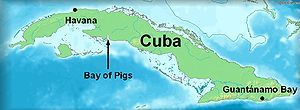“Punting the Pundits” is an Open Thread. It is a selection of editorials and opinions from around the news medium and the internet blogs. The intent is to provide a forum for your reactions and opinions, not just to the opinions presented, but to what ever you find important.
Thanks to ek hornbeck, click on the link and you can access all the past “Punting the Pundits”.
The New York Times Editorial: Embarrassed by Bad Laws
A year ago, few people outside the world of state legislatures had heard of the American Legislative Exchange Council, a four-decade-old organization run by right-wing activists and financed by business leaders. The group writes prototypes of state laws to promote corporate and conservative interests and spreads them from one state capital to another.
The council, known as ALEC, has since become better known, with news organizations alerting the public to the damage it has caused: voter ID laws that marginalize minorities and the elderly, antiunion bills that hurt the middle class and the dismantling of protective environmental regulations.
Joe Nocera: Turning the Tables on Russia
Who knew that what corrupt Russian officials care about, more than just about anything, is getting their assets – and themselves – out of their own country? They own homes in St. Tropez, fly to Miami for vacation and set up bank accounts in Switzerland. They understand the importance of stashing their money someplace where the rule of law matters, which is most certainly not Russia. Besides, getting out of Russia is one of the pleasures of being a corrupt Russian official.
As it turns out, a man named William Browder knows this. As does Senator Benjamin Cardin, a Democrat from Maryland. As do plenty of other senators, on both sides of the aisle.
Tarek Mehanna, a U.S. citizen, was sentenced Thursday in Worcester, Mass., to 17½ years in prison. It was another of the tawdry show trials held against Muslim activists since 9/11 as a result of the government’s criminalization of what people say and believe. These trials, where secrecy rules permit federal lawyers to prosecute people on “evidence” the defendants are not allowed to examine, are the harbinger of a corporate totalitarian state in which any form of dissent can be declared illegal. What the government did to Mehanna, and what it has done to hundreds of other innocent Muslims in this country over the last decade, it will eventually do to the rest of us.
Eugene Robinson: Which Mitt will we get?
It’s all over but the shouting – or, in this case, the polite applause: Mitt Romney is going to be the Republican presidential nominee. But which Mitt Romney? Will it be Mitt One or Mitt Two?
This is not an inconsequential question. Mitt One is a fiscally conservative, socially moderate, Wall Street-style Republican who believes in compromise to get things done. Mitt Two is a far-right zealot who accuses Democrats of trying to impose godless socialism and claims that what hangs in the balance this fall is nothing less than liberty itself.
We’ve seen a lot of Mitt Two during the primary campaign. Competing against Rick Santorum, a genuine far-right zealot, and Newt Gingrich, a master of rhetorical excess, Romney strove mightily to convince the GOP’s activist base that he could be every bit as doctrinaire as his opponents.
Chase Madar: What the Laws of War Allow
Anyone who would like to witness a vivid example of modern warfare that adheres to the laws of war-that corpus of regulations developed painstakingly over centuries by jurists, humanitarians, and soldiers, a body of rules that is now an essential, institutionalized part of the U.S. armed forces and indeed all modern militaries-should simply click here and watch the video.
Wait a minute: that’s the WikiLeaks “Collateral Murder” video! The gunsight view of an Apache helicopter opening fire from half a mile high on a crowd of Iraqis-a few armed men, but mostly unarmed civilians, including a couple of Reuters employees-as they unsuspectingly walked the streets of a Baghdad suburb one July day in 2007.
Frank Bruni: … And Love Handles for All
What if we have it backward? What if the 310-pound man trying to jam into the middle seat and the 225-pound woman breaking into a sweat only halfway up the stairs aren’t the undisciplined miscreants of modern American life but the very emblems of it?
What if fatness, even obesity, is less a lurking danger than a likely destiny, and the surprise isn’t how many seriously overweight people are out there but how few?

 On this day in 1775, British troops march out of Boston on a mission to confiscate the American arsenal at Concord and to capture Patriot leaders Samuel Adams and John Hancock, known to be hiding at Lexington. As the British departed,
On this day in 1775, British troops march out of Boston on a mission to confiscate the American arsenal at Concord and to capture Patriot leaders Samuel Adams and John Hancock, known to be hiding at Lexington. As the British departed, 
Recent Comments